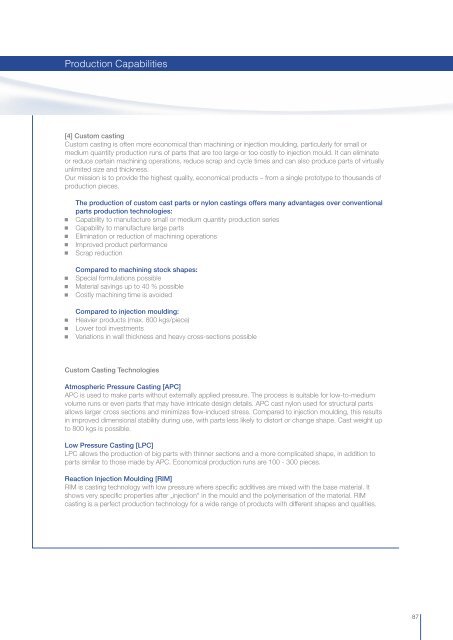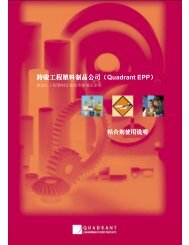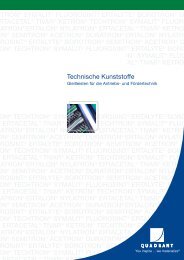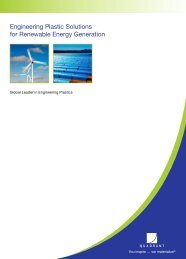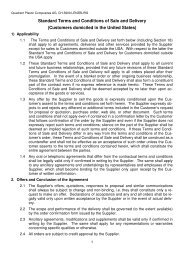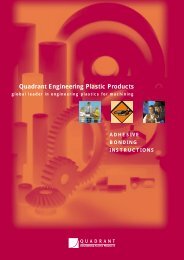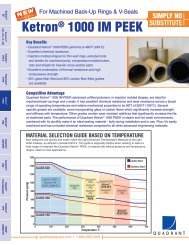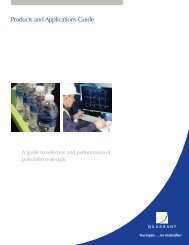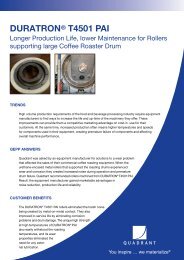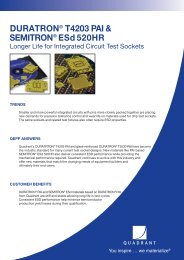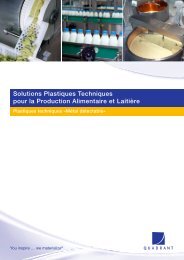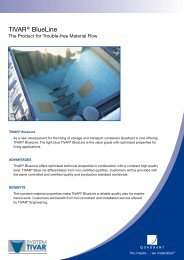Product Guide for Design Engineers - Quadrant
Product Guide for Design Engineers - Quadrant
Product Guide for Design Engineers - Quadrant
You also want an ePaper? Increase the reach of your titles
YUMPU automatically turns print PDFs into web optimized ePapers that Google loves.
<strong>Product</strong>ion Capabilities<br />
[4] Custom casting<br />
Custom casting is often more economical than machining or injection moulding, particularly <strong>for</strong> small or<br />
medium quantity production runs of parts that are too large or too costly to injection mould. It can eliminate<br />
or reduce certain machining operations, reduce scrap and cycle times and can also produce parts of virtually<br />
unlimited size and thickness.<br />
Our mission is to provide the highest quality, economical products – from a single prototype to thousands of<br />
production pieces.<br />
The production of custom cast parts or nylon castings offers many advantages over conventional<br />
parts production technologies:<br />
Capability to manufacture small or medium quantity production series<br />
Capability to manufacture large parts<br />
Elimination or reduction of machining operations<br />
Improved product per<strong>for</strong>mance<br />
Scrap reduction<br />
Compared to machining stock shapes:<br />
Special <strong>for</strong>mulations possible<br />
Material savings up to 40 % possible<br />
Costly machining time is avoided<br />
Compared to injection moulding:<br />
Heavier products (max. 800 kgs/piece)<br />
Lower tool investments<br />
Variations in wall thickness and heavy cross-sections possible<br />
Custom Casting Technologies<br />
Atmospheric Pressure Casting [APC]<br />
APC is used to make parts without externally applied pressure. The process is suitable <strong>for</strong> low-to-medium<br />
volume runs or even parts that may have intricate design details. APC cast nylon used <strong>for</strong> structural parts<br />
allows larger cross sections and minimizes fl ow-induced stress. Compared to injection moulding, this results<br />
in improved dimensional stability during use, with parts less likely to distort or change shape. Cast weight up<br />
to 800 kgs is possible.<br />
Low Pressure Casting [LPC]<br />
LPC allows the production of big parts with thinner sections and a more complicated shape, in addition to<br />
parts similar to those made by APC. Economical production runs are 100 - 300 pieces.<br />
Reaction Injection Moulding [RIM]<br />
RIM is casting technology with low pressure where specifi c additives are mixed with the base material. It<br />
shows very specifi c properties after „injection“ in the mould and the polymerisation of the material. RIM<br />
casting is a perfect production technology <strong>for</strong> a wide range of products with different shapes and qualities.<br />
87


